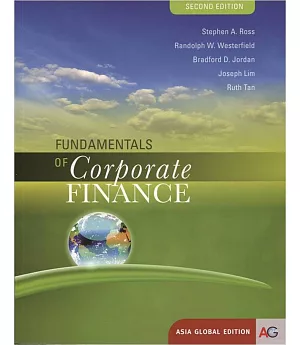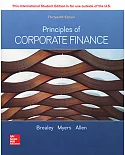PART I: OVERVIEW OF CORPORATE FINANCE
Ch1 Introduction to Corporate Finance
Ch2 Financial Statements, Taxes, and Cash Flow
PART II: FINANCIAL STATEMENTS AND LONG-TERM FINANCIAL PLANNING
Ch3 Working with Financial Statements
Ch4 Long-Term Financial Planning and Growth
PART III: VALUATION OF FUTURE CASH FLOWS
Ch5 Introduction to Valuation: The Time Value of Money
Ch6 Discounted Cash Flow Valuation
Ch7 Interest Rates and Bond Valuation
Ch8 Stock Valuation
PART IV: CAPITAL BUDGETING
Ch9 Net Present Value and Other Investment Criteria
Ch10 Making Capital Investment Decisions
Ch11 Project Analysis and Evaluation
PART V: RISK AND RETURN
Ch12 Some Lessons from Capital Market History
Ch13 Return, Risk, and the Security Market Line
PART VI: COST OF CAPITAL AND LONG-TERM FINANCIAL POLICY
Ch14 Cost of Capital
Ch15 Raising Capital
Ch16 Financial Leverage and Capital Structure Policy
Ch17 Dividends and Payout Policy
PART VII: SHORT-TERM FINANCIAL PLANNING AND MANAGEMENT
Ch18 Short-Term Finance and Planning
Ch19 Cash and Liquidity Management
Ch20 Credit and Inventory Management
PART VIII: TOPICS IN CORPORATE FINANCE
Ch21 International Corporate Finance
Ch22 Behavioral Finance: Implications for Financial Management
Ch23 Enterprise Risk Management
Ch24 Option Valuation
Ch25 Option Valuation
Ch26 Mergers and Acquisitions
Ch27 Leasing





















